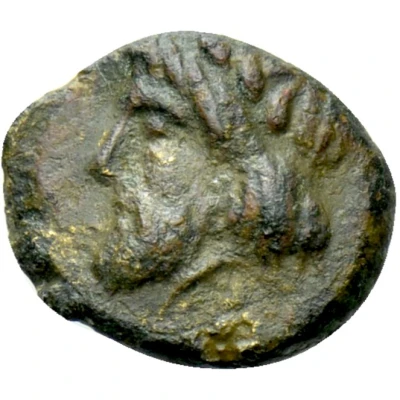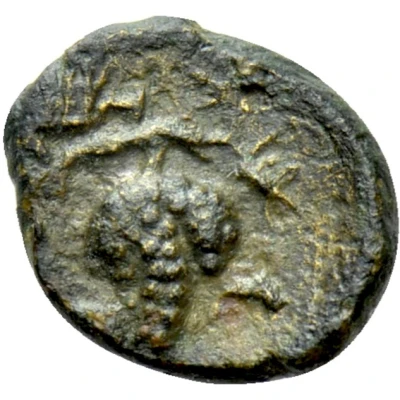


© Numismatik Lanz Auctions
Æ - Metokos Type I; Horse facing left 405 BC - 391 BC
| Bronze | 14.5 g | 19 mm |
| Issuer | Kingdom of Odryssa (Thracians) |
|---|---|
| King | Metokos (circa 407-386 BC) |
| Type | Standard circulation coin |
| Years | 405 BC - 391 BC |
| Currency | Drachm |
| Composition | Bronze |
| Weight | 14.5 g |
| Diameter | 19 mm |
| Shape | Round (irregular) |
| Technique | Hammered |
| Demonetized | Yes |
| Updated | 2024-10-09 |
| Numista | N#236734 |
|---|---|
| Rarity index | 100% |
Reverse
Inscription around bipennis (labrys, double-bitted axe).
Lettering: ΜΗΤΟΚΟ
Comment
Weight varies: 14.10 - 14.77 gDiameter varies: 17 - 22 mm
S. Topalov, The Odrysian kingdom from the late 5th to the mid-4th c. BC (1994), p. 154, 12 var.
S. Topalov, Information about the unknown types of early Thracian tribal and ruler's coins 6th-4th c. B.C. (2000), S. XII, 23 var.
Examples of this type:
• Example #1 (14.77 g; 22 mm; Green patina; Very Fine)
©️ Numismatik Lanz, München
◦ Auctioned by Numismatik Lanz, Auction 125, 28 November 2005, Lot 194. Estimated at 500 EUR.
Interesting fact
The Metokos coin features a horse facing left, which was a common motif in Thracian art and symbolism. Horses were highly valued in Thracian culture, not only for their practical uses in transportation and warfare, but also for their spiritual and religious significance. In Thracian mythology, horses were associated with the goddess Epona, who was revered as a protector of horses and fertility. The horse was also a symbol of strength, courage, and freedom, and was often depicted in art and literature as a symbol of power and prestige. It's worth noting that the Metokos coin is a rare and valuable artifact, and it's interesting to see how it has been preserved and studied by historians and numismatists over the centuries.



